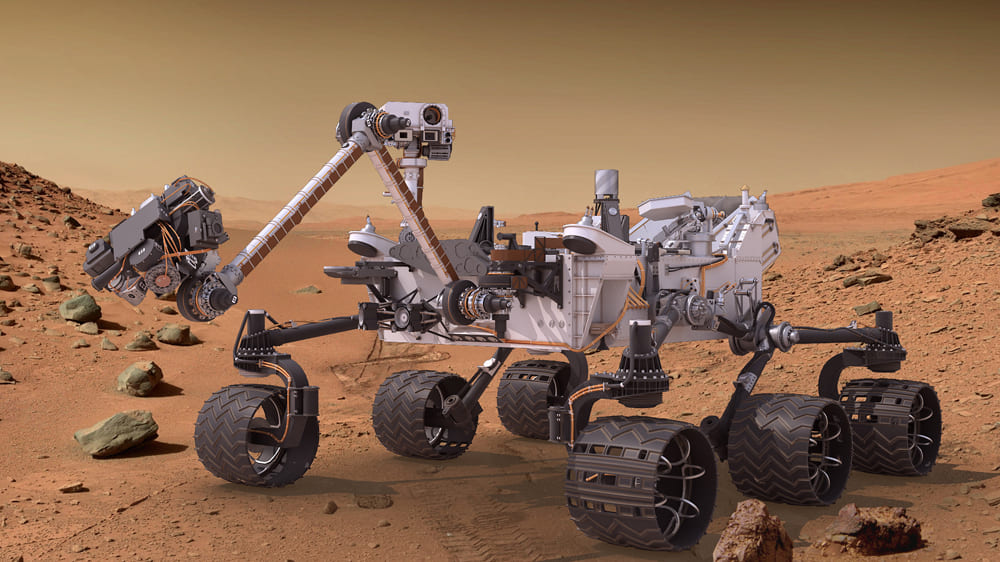Mars exploration has captivated humanity for decades, driven by our desire to understand whether life ever existed on the Red Planet and to unravel its geological mysteries. Central to these efforts have been a series of robotic Mars rovers, each advancing our knowledge and paving the way for future human exploration. Here, we trace the journey from the first successful rover, Sojourner, to the latest, Perseverance.
Sojourner (1997)
The journey began with Sojourner, part of NASA’s Mars Pathfinder mission. This small, six-wheeled rover landed on Mars on July 4, 1997. Weighing just 11.5 kg (25 lbs), Sojourner’s mission was primarily to test the technology for driving on Mars and to analyze the composition of Martian rocks and soil. Despite its limited scientific capabilities compared to later rovers, Sojourner’s successful operation for 83 days—well beyond its planned 7-day mission—provided critical data and proved that Mars rovers could effectively explore the Martian surface.
Spirit and Opportunity (2004-2010 and 2018)
Building on Sojourner’s success, NASA launched the twin rovers Spirit and Opportunity in 2003. Landing in January 2004, these rovers were designed to search for and characterize a wide range of rocks and soils that hold clues to past water activity on Mars.
- Spirit: landing in Gusev Crater, Spirit faced numerous challenges, including getting stuck in soft soil in 2009. Despite these issues, Spirit made significant discoveries, such as evidence of past hydrothermal activity, before its mission ended in 2010.
- Opportunity: landing on the opposite side of Mars in Meridiani Planum, Opportunity far exceeded its 90-day mission, operating for nearly 15 years until June 2018. It traversed over 45 kilometers (28 miles) and discovered hematite spheres, nicknamed “blueberries,” indicating past water presence.
Curiosity (2012-present)
Curiosity, part of NASA’s Mars Science Laboratory mission, landed in Gale Crater on August 6, 2012. Unlike its predecessors, Curiosity is a car-sized rover equipped with a sophisticated suite of scientific instruments designed to assess whether Mars ever had an environment capable of supporting microbial life.
Curiosity’s key findings include:
- Evidence of ancient lakes and rivers within Gale Crater.
- Detection of organic molecules in Martian soil.
- Seasonal variations in methane concentrations in the Martian atmosphere.
These discoveries suggest that Mars had habitable conditions in the past and provide insights into the planet’s potential to support life.
Perseverance (2021-present)
The latest and most advanced rover, Perseverance, landed in Jezero Crater on February 18, 2021. This mission aims to search for signs of ancient life and collect samples of rock and soil for possible return to Earth.
Key features of Perseverance include:
- Sample caching: it is the first rover designed to collect and store samples for future retrieval.
- Ingenuity helicopter: Perseverance carries a small helicopter, Ingenuity, which has successfully conducted the first powered flights on another planet, demonstrating aerial exploration potential.
- Advanced scientific instruments: these include SHERLOC and PIXL, which are used to detect organic compounds and characterize the planet’s geology in unprecedented detail.
Perseverance is already making significant contributions, such as confirming the presence of ancient river delta deposits in Jezero Crater, which could be prime locations for searching for biosignatures.
From Sojourner’s modest beginnings to Perseverance’s sophisticated science, Mars rovers have revolutionized our understanding of the Red Planet. Each rover has built on the successes and lessons of its predecessors, bringing us closer to answering fundamental questions about Mars’ past and its potential to support life. These robotic explorers are crucial in paving the way for eventual human missions to Mars, representing humanity’s enduring quest to explore and understand our solar system.


